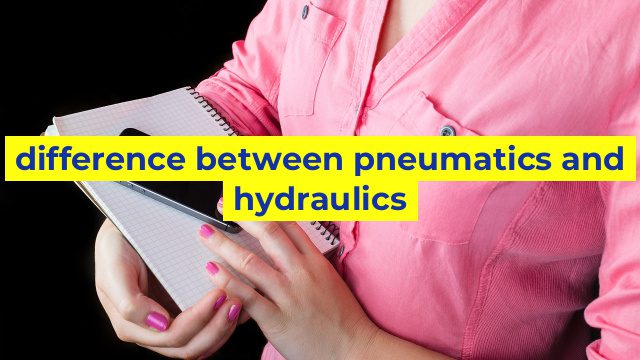The Differences Between Pneumatics and Hydraulics
If you’re involved in automation or engineering, you may be familiar with the terms pneumatics and hydraulics. Both are methods of transmitting energy where fluid power is used to generate motion or force. However, there are distinct differences between the two. In this article, we’ll take a closer look at pneumatics and hydraulics and identify what sets them apart.
What is Pneumatics?
Pneumatics refers to the use of compressed air to power machines and generate force. This technology is commonly used in a wide range of applications, from manufacturing plants to automotive assembly lines. Pneumatic systems use air compressors to pressurize and store air within a tank or cylinder. This compressed air is then used to power pneumatic cylinders, motors, and other tools that are essential for many industrial processes.
One of the key benefits of pneumatics is that it can operate in environments where electric systems cannot, such as wet or explosive areas. The main drawback is that it cannot generate as much force as hydraulic systems.
What is Hydraulics?
Hydraulics, on the other hand, uses the properties of liquids to generate force. This technology is widely used in construction, mining, and heavy industry. Hydraulic systems use pumps to force liquids, usually oil or water, into cylinders or motors. This pressurized liquid is then used to move pistons or cylinders, generating force or motion.
Hydraulic systems can produce much greater force than pneumatic systems, making them suitable for demanding applications that require high power. However, they are also more complex and expensive than pneumatic systems.
What are the main differences?
The primary difference between pneumatics and hydraulics is the fluid used to transmit power: air versus liquid. This difference results in different benefits and drawbacks for each technology.
Pneumatics is generally simpler and easier to maintain than hydraulics, making it a popular choice for smaller-scale applications. It is also less expensive and more easily available, making it a more economical choice. However, pneumatics can’t generate as much force as hydraulics, which limits its suitability for certain applications.
Hydraulics, meanwhile, is more complex and requires more frequent and specialized maintenance. It is also more expensive to operate and requires a more significant initial investment. However, it can generate much greater force than pneumatics, which makes it better suited for heavy-duty applications.
Conclusion
In summary, both pneumatics and hydraulics are essential tools in many industrial processes. Each technology has its own unique advantages and disadvantages, and the choice ultimately depends on the specific needs and requirements of a given application. When choosing between pneumatics and hydraulics, it is essential to consider factors such as power, cost, and complexity to ensure that you select the technology that is most suitable for your needs.
Table difference between pneumatics and hydraulics
| Feature | Pneumatics | Hydraulics |
|---|---|---|
| Working fluid | Compressed gas (usually air) | Liquid (usually oil) |
| Operating pressure | Lower pressure range (typically up to 150 PSI) | Higher pressure range (typically up to 7000 PSI) |
| Speed | Higher speed | Lower speed |
| Noise | Produces more noise | Produces less noise |
| Maintenance | Lower maintenance requirements | Higher maintenance requirements |
| Environmental impact | Less impact on the environment | Higher impact on the environment |
